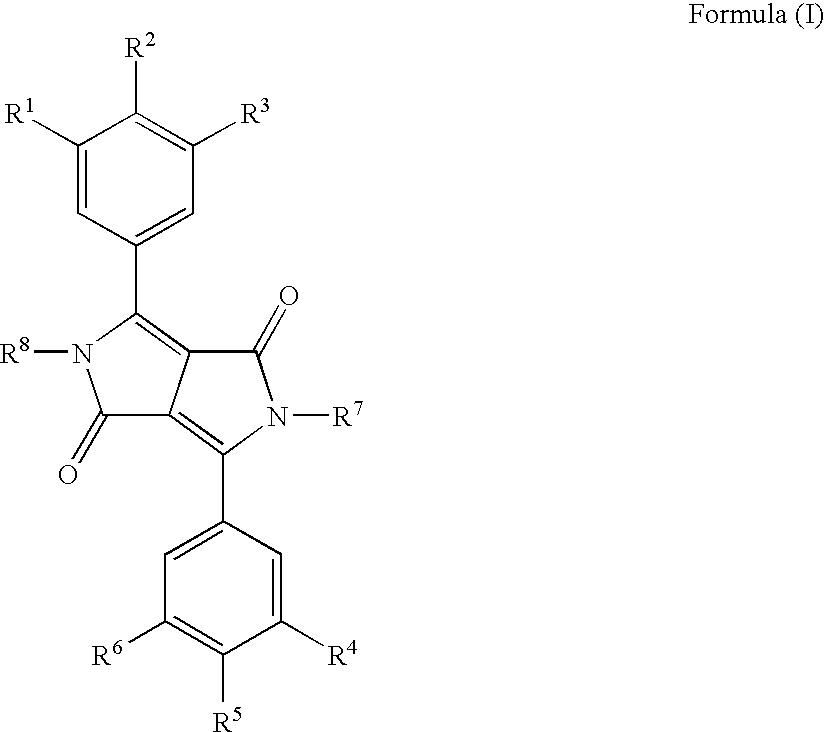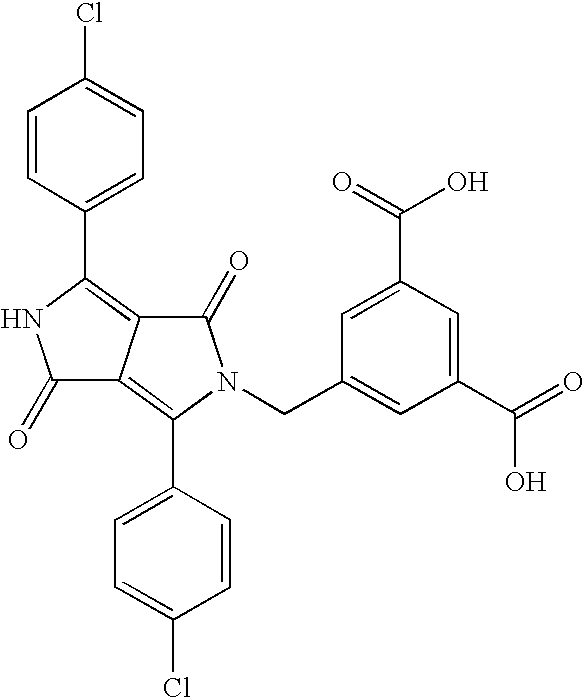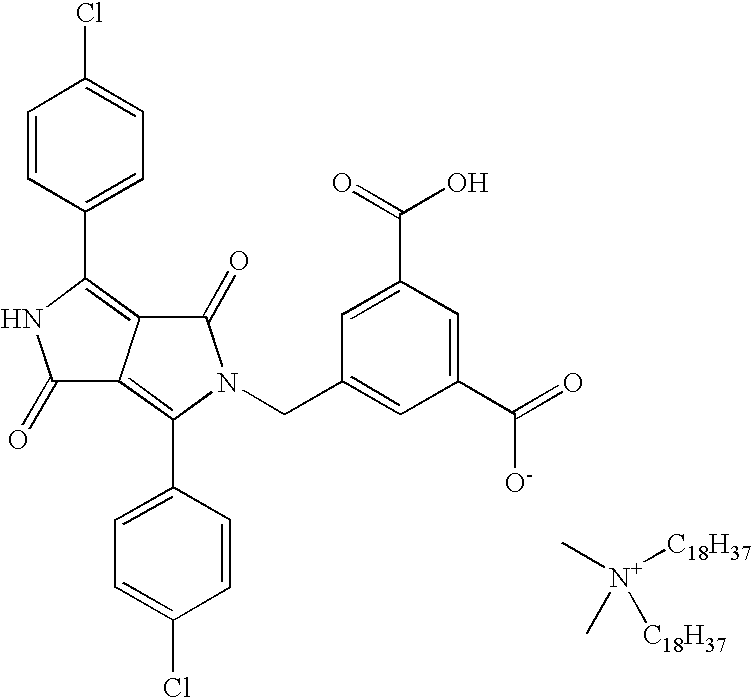Non-Aqueous Pigment Dispersions Using Dispersion Synergists
a technology of dispersion synergy and pigment, which is applied in the direction of diketopyrrolopyrrole dyes, inks, chemistry apparatus and processes, etc., can solve the problems of difficult preparation of good thermally stable dispersions with submicron particles, pigments are particularly difficult to disperse, and pigment particles may have a tendency to re-agglomerate, etc., to achieve high dispersion quality
- Summary
- Abstract
- Description
- Claims
- Application Information
AI Technical Summary
Benefits of technology
Problems solved by technology
Method used
Image
Examples
example 1
[0272]This example illustrates the synthesis of diketopyrrolo-pyrrole derivatives including at least one acidic group.
Dispersion Synergist DPC-1
[0273]Synthesis of the dispersion synergist DPC-1 was accomplished according to the following synthesis scheme:
25 g (0.1 mol) of diethyl-5-(hydroxymethyl)isophthalate was dissolved in a mixture of 100 mL of methylenechloride and 0.3 g dimethylacetamide (catalyst). 19.6 g (0.165 mol) of thionylchloride was dropwise added and the mixture was stirred overnight. After this period, the mixture was cooled in an ice bath and 150 mL of ethanol was added. While the methylenechloride was evaporated under reduced pressure a solid appeared. This solid product DP-1 was filtered and washed with a small volume of ethanol. The yield was 86%.
35.7 g (0.1 mol) of PR254 in 500 mL dimethylsulfoxide was dissolved by the addition of 22.44 g (0.2 mol) potassium tert-butoxide. The solution was heated to about 70° C. and 27.1 g (0.1 mol) of compound DP-1 was added. T...
example 2
[0277]This example illustrates that stable non-aqueous inkjet inks with high dispersion quality for producing high image quality images were obtained when using a diketopyrrolo-pyrrole derivative in combination with a quinacridone pigment.
Preparation and Evaluation of Non-aqueous Inkjet Inks
[0278]All inkjet inks were prepared in the same manner to obtain a composition as described in Table 3, except that different quinacridone pigments were used in combination with the dispersion synergist DPC-1. In the absence of a diketopyrrolo-pyrrole derivative as dispersion synergist, a pigment concentration of 5.00 wt % instead of 4.50 wt % was used.
TABLE 3Componentwt %Pigment4.50DPC-10.50Solsperse ™ 320005.00DEGDEE90.00
[0279]An ink composition was made by mixing the pigment, the polymeric dispersant Solsperse™ 32000, optionally the dispersion synergist and the organic solvent DEGDEE with a dissolver and subsequently treating this mixture with a roller mill procedure using yttrium-stabilized z...
PUM
| Property | Measurement | Unit |
|---|---|---|
| wt % | aaaaa | aaaaa |
| temperatures | aaaaa | aaaaa |
| solubility | aaaaa | aaaaa |
Abstract
Description
Claims
Application Information
 Login to View More
Login to View More - R&D
- Intellectual Property
- Life Sciences
- Materials
- Tech Scout
- Unparalleled Data Quality
- Higher Quality Content
- 60% Fewer Hallucinations
Browse by: Latest US Patents, China's latest patents, Technical Efficacy Thesaurus, Application Domain, Technology Topic, Popular Technical Reports.
© 2025 PatSnap. All rights reserved.Legal|Privacy policy|Modern Slavery Act Transparency Statement|Sitemap|About US| Contact US: help@patsnap.com



